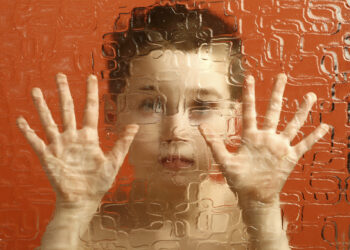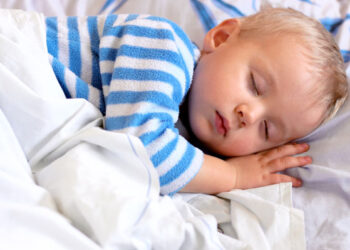Febrile convulsion
What Are Febrile Convulsions?
A febrile convulsion is a seizure that sometimes occurs in children when they develop a fever (a high temperature). Seizures can be very scary to witness and parents often worry that their child is seriously ill, or will develop epilepsy as a result of the convulsion. However, in most cases febrile convulsions are not serious and the child will most likely make a full recovery with no permanent damage caused.
Who do Febrile Convulsions Affect?
Febrile convulsions occur in around 3 out of every 100 children between the ages of 6 months and 6 years, they are most common between the ages of 18 months and 3 years. Around one third of children who have had a febrile convulsion will go on to have further febrile convulsion in the future.
Around a quarter of children affected by febrile convulsions have a family history of febrile convulsions and it is thought that there may be genetic factors involved.
What Causes Febrile Convulsions?
Febrile convulsions are thought to be caused when a child’s young, immature brain responds inappropriately to a high temperature. Any illness that causes a fever has the potential to cause a febrile convulsion. Often they are due to simple, common illnesses such as colds, ear infections and viruses, but sometimes seizures can be caused by more serious illnesses such as meningitis or pneumonia.
What do Febrile Convulsions Look Like?
In most cases the child will have what is known as a simple febrile seizure. Common features of a simple febrile seizure are as follows:
- A vacant or dazed expression, followed by unconsciousness
- Eye rolling
- A stiff body with twitching or shaking of the whole body
A simple febrile seizure can last from a few seconds to a few minutes, but usually would not exceed five minutes. Afterwards the child is often sleepy and may be a little confused but usually within an hour, as their temperature returns to normal, they should improve. A simple febrile convulsion does not reoccur within the same illness.
Occasionally, a child will have a complex febrile seizure. In complex seizures the convulsions last longer than fifteen minutes, or recur within 24 hours (or within the same illness) as an initial febrile convulsion. Sometimes complex seizures only affect one part of the body, for example one arm or one leg, or a seizure may be classed as complex if the child takes longer than one hour to recover.
Very occasionally, febrile status epilepticus occurs, in which the seizure lasts for longer than 30 minutes.
What Should I Do if My Child Has a Febrile Convulsion?
If you are with a child who is having a seizure you should first of all ensure that the child is safe from harm, ensure that their head is protected and they are able to breathe. Note the time that the seizure began, so that you have an idea how long the convulsion is lasting.
If possible, lay the child in the recovery position but do not force anything into the child’s mouth or attempt to restrain the child as this could cause injury.
When the convulsion stops ensure the child is comfortable. If possible check the child’s temperature and remove some of their clothing, if appropriate, to cool them down. Once the child has recovered enough to swallow they can be given a drink of water and some paracetamol or ibuprofen to treat their temperature.
If the seizure lasted for less than 5 minutes the child should be taken for urgent medical assessment. If the seizure lasts longer than 5 minutes, or the child does not appear to be breathing properly, dial 999 for an ambulance. If you suspect the child suffered an injury during the seizure, for example, from falling and hitting their head when they lost consciousness, ensure that you inform the medical professionals when your child is assessed.
What is the Treatment for Febrile Convulsions?
In most cases, when a simple febrile convulsion occurs, the convulsion itself will stop within a few seconds or minutes without the need for treatment. It is, however, important to determine the cause of the initial fever that triggered the convulsion. This is because the child may have an infection that requires antibiotic treatment such as an ear or throat infection, pneumonia or meningitis.
Therefore, if a child presents at hospital following a febrile convulsion it is usual for a number of investigations to be carried out including blood and urine tests, a thorough examination of the child’s ears, throat, chest and skin, and sometimes a lumbar puncture. Which tests are carried out will be determined by your paediatrician.
In the majority of cases the child will require medication such as paracetamol or ibuprofen to manage their fever and help keep their body temperature within a normal range. If a serious bacterial infection is suspected the child may require hospital admission for intravenous antibiotics. However, if it is thought that a simple viral illness, such as a common cold, caused the convulsion there may be no treatment required, other than managing the temperatures with paracetamol and ibuprofen at home.
How Can I Prevent My Child from Having Further Febrile Convulsions in the Future?
Around 30% of children who have had a febrile convulsion will have a further convulsion in the future. Unfortunately, they cannot always be prevented as sometimes the temperature rises or drops rapidly or a seizure can occur just before the fever occurs but the risk of further convulsions can be minimised by vigilance and prompt action when the child develops a fever.
High temperatures should be treated by removing excess heavy clothing, leaving the child lightly dressed. Paracetamol suspension can be given every 6 hours to lower the temperature. In addition, if the temperature is not responding to Paracetamol, Ibuprofen suspension can also be given every 8 hours. Ensure the child drinks plenty of fluids and arrange to see a doctor for assessment to determine the cause of the temperature.
There are times, when a child has a fever, that urgent medical attention is advised. These include:
- If the child is excessively drowsy or unresponsive
- If the child has a rash that does not disappear when pressed
- If the child has stopped feeding or stopped passing urine
- If a baby has a sunken or bulging fontanelle
- If the child is unable to breathe properly
Being prepared
The Children’s e-Hospital has developed a first aid kit specifically with children in mind. This kit has over 50 parts and also includes flash cards to assist you in the event of having to deal with a choking child and other resuscitation situations
Buy a Children’s First Aid Kit
Further Reading:
http://www.nhs.uk/Conditions/Febrile-convulsions/Pages/Introduction.aspx



